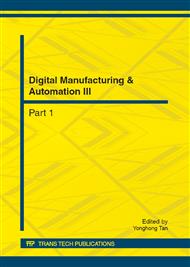p.1325
p.1331
p.1336
p.1340
p.1345
p.1351
p.1355
p.1361
p.1365
A Study on a Passenger Car Diesel Engine Fueled with Butanol-Diesel Blend under Typical Operating Condition
Abstract:
The effects of butanol-diesel blending ratio, injecting timing and pilot injection quantity on combustion and emissions were experimentally investigated for a passenger car diesel engine. The results showed that under the typical operating condition of 2000r/min engine speed and 0.2MPa BMEP engine load, the engine’s combustion phase retarded, the peak combustion pressure and maximum in-cylinder mean temperature decreasing with the delay of the main injection timing using both the neat diesel and diesel-butanol blends. And the engine smoke level increased, while the NOx and CO emissions decreased. However, at the same main injection timing, with the increase of the butanol in the blends, the ignition delay of the combustion prolonged, the burn rate and brake specific fuel consumption increased, NOx and soot emissions decreased, and HC and CO emissions increased, while the peak in-cylinder pressure was slightly influenced. The results of this study indicate that the selection of the butanol-diesel blend ratio and injection timing should consider the engineering balances among the engine’s fuel economy and emissions.
Info:
Periodical:
Pages:
1345-1350
Citation:
Online since:
July 2012
Authors:
Keywords:
Price:
Сopyright:
© 2012 Trans Tech Publications Ltd. All Rights Reserved
Share:
Citation:


